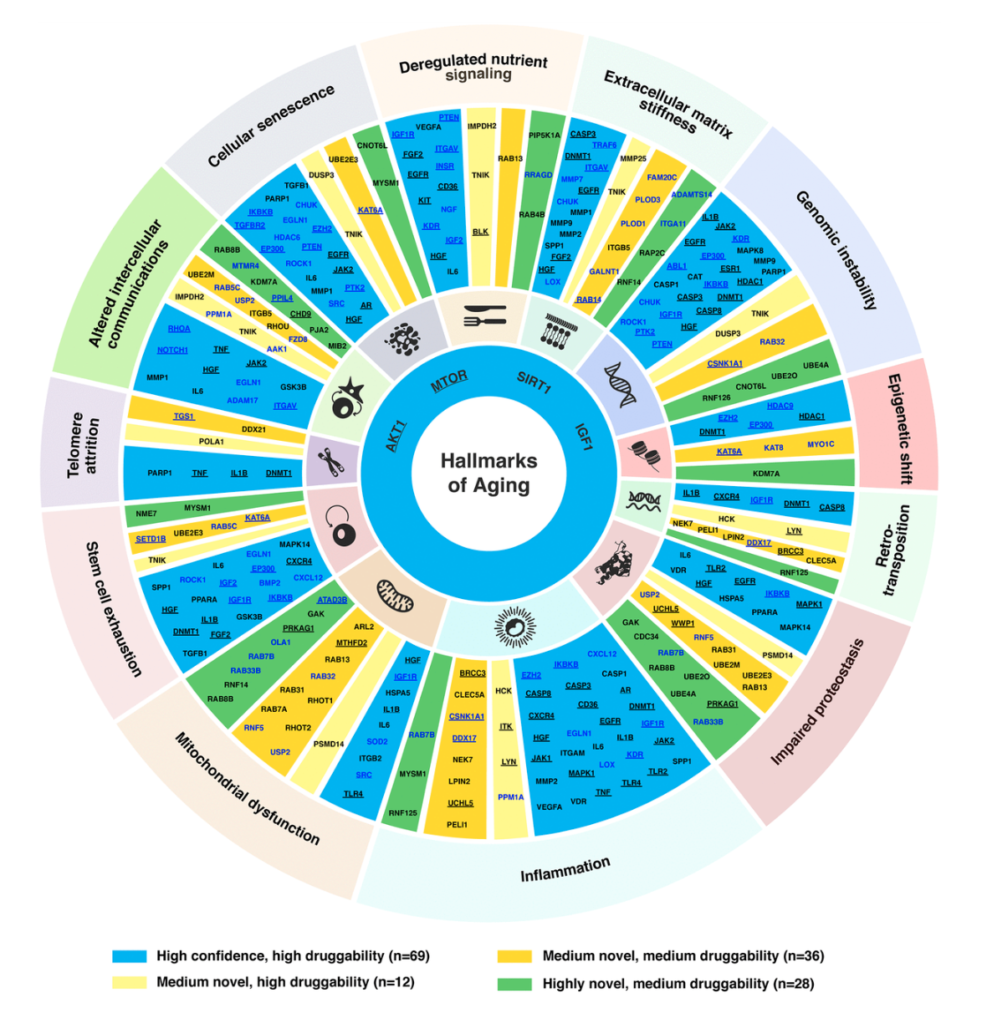Researchers conducted an interspecies analysis to determine the effects on aging that occur when certain plant proteins are expressed in animals and animal proteins are expressed in plants.

The Trending With Impact series highlights Aging (Aging-US) publications that attract higher visibility among readers around the world online, in the news, and on social media—beyond normal readership levels. Look for future science news about the latest trending publications here, and at Aging-US.com.
—
The proteostasis network is a cellular quality control system that ensures proteins fold correctly, damaged proteins are eliminated and protein pools are replenished. During the aging process, the proteome and respective signaling pathways frequently become error-prone. A class of proteins believed to play a role in aging-related processes is the phosphatidylethanolamine-binding proteins (PEBPs). These conserved regulators of signaling networks are found in plants, animals and other organisms.
In a previous 2021 study, researchers from Fraunhofer Institute for Molecular Biology and Applied Ecology IME, University of Münster and Twyman Research Management demonstrated that a PEBP found in the tobacco plant, NtFT4, improves vitality, growth and protein yield when transfected in human cells. In a recent study, published in Aging (Aging-US) Volume 14, Issue 7, these same researchers transfected plant PEBPs in animals, and animal PEBPs in plants, to further investigate changes in activity within their respective aging processes. The research paper was published on April 8, 2022, and entitled, “The tobacco phosphatidylethanolamine-binding protein NtFT4 increases the lifespan of Drosophila melanogaster by interacting with the proteostasis network.”
“To investigate the functions of PEBPs in more detail, we undertook interspecies analysis and determined the molecular, cellular and organism-level effects of animal PEBPs expressed in Arabidopsis (Arabidopsis thaliana) and tobacco (Nicotiana tabacum) and plant PEBPs expressed in Drosophila.”
The Study
Specifically, the team used tobacco plant PEBPs (NtFT2 and NtFT4), fruit fly (Drosophila melanogaster) PEBPs (CG7054 and Pebp1) and human PEBPs (RKIP and hPEBP4). They found that the expression of animal PEBPs in the thale cress (Arabidopsis) and tobacco plants had no effect on flowering or growth. However, the expression of tobacco PEBPs in animals did have an intriguing impact. The researchers observed that the tobacco PEBP NtFT4 increased the lifespan of fruit flies by interacting with the proteostasis network—through mechanisms such as heat shock protein 26 (HSP26). NtFT4 expression in older flies promoted longevity by prolonging Hsp26 gene expression and maintaining protein integrity. After the PEBP CG7054 was knocked down in fruit flies, overall lifespan significantly decreased and approximately 20% of adult flies died within two days.
“In contrast, the expression of plant PEBPs in Drosophila increased the adult fly lifespan by up to one third, whereas the silencing of the endogenous PEBP CG7054 reduced longevity.”
Conclusion
“The heterologous expression of NtFT4 in flies revealed new aspects of PEBP activity that point to a role in proteostasis, improving health and lifespan [41].”
This study provides new insights into the role of PEBPs in plants and animals and how they might contribute to the aging process. Plants may use different cellular mechanisms than animals when it comes to aging-related processes such as the regulation of signaling networks. The results of this study highlight the unique role that plants may play in understanding the aging process. Further studies are needed to better understand the molecular mechanisms behind these effects, as well as their potential applications for aging interventions in humans.
“We found that heterologous expression of the tobacco (Nicotiana tabacum) PEBP NtFT4 in Drosophila melanogaster significantly increased the lifespan of adult flies and reduced age-related locomotor decline. Similarly, overexpression of the Drosophila ortholog CG7054 increased longevity, whereas its suppression by RNA interference had the opposite effect.”
Click here to read the full research paper published by Aging (Aging-US).
AGING (AGING-US) VIDEOS: YouTube | LabTube | Aging-US.com
—
Aging (Aging-US) is an open-access journal that publishes research papers bi-monthly in all fields of aging research. These papers are available at no cost to readers on Aging-us.com. Open-access journals have the power to benefit humanity from the inside out by rapidly disseminating information that may be freely shared with researchers, colleagues, family, and friends around the world.
For media inquiries, please contact [email protected].










